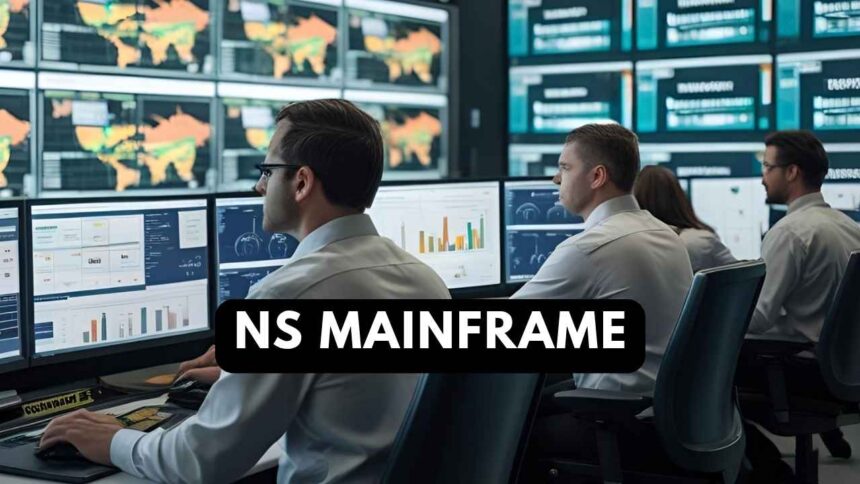What is NS Mainframe?
NS Mainframe is a smart digital system that helps manage and control different parts of transportation—like trains, cargo, and travel schedules. It uses real-time data and automation to improve how transportation systems run, making travel faster, safer, and more efficient.
Purpose and Use in Transportation
The goal of NS Mainframe is to support large-scale transport operations. It collects and analyzes data from different sources—train stations, GPS, passenger apps—and helps decision-makers react quickly to any situation.
The Role of Smart Technology in Transport
How Digital Tools Improve Travel
Technology like NS Mainframe helps transportation companies:
-
Track trains in real time
-
Avoid delays
-
Save fuel and energy
-
Improve customer service
Why Transportation Needs Innovation
As cities grow, traffic increases. Traditional systems can’t handle this alone. Smart tools like NS Mainframe solve this by making the entire system more connected and responsive.
History and Development of NS Mainframe
Origin of the System
NS Mainframe was first developed for use in European rail networks. The system was designed to help railway companies handle growing demand and manage trains better.
Key Milestones Over the Years
-
Early 2000s: Testing of automated scheduling
-
2010: Real-time GPS and weather integration
-
2020: Full AI support and mobile access for passengers
How NS Mainframe Works
Core Components
The system includes:
-
Central computing unit (mainframe)
-
Data servers
-
Monitoring sensors on trains and stations
-
AI-based software tools
Data Collection and Real-Time Processing
NS Mainframe collects data from trains, tracks, passengers, and weather. It processes this data immediately and gives updates to staff, apps, and control rooms.
Benefits of Using NS Mainframe
Faster Train Operations
NSMainframe automates scheduling and routing, reducing delays and speeding up journeys.
Better Passenger Experience
Passengers get real-time updates on their phones, easier ticketing, and fewer last-minute changes.
Less Human Error
Automated systems reduce mistakes caused by manual controls or miscommunication.
NS Mainframe in Public Transportation
Use in Trains and Railways
The system is used to:
-
Plan train routes
-
Monitor fuel usage
-
Control speed limits and safety alerts
Scheduling and Delay Management
If a train is delayed, NSMainframe can automatically adjust other trains and inform passengers right away.
NS Mainframe in Logistics and Freight
Smart Cargo Tracking
Freight companies use NS Mainframe to know where their cargo is, when it will arrive, and if it needs rerouting.
Efficient Route Planning
It calculates the fastest, safest, and most cost-effective routes for goods, saving time and money.
Real-Time Decision Making with NS Mainframe
AI and Automation
The system learns from past data to predict and solve future problems—like traffic jams or weather delays.
Instant Problem Solving
If a train breaks down, the system reroutes others, informs staff, and notifies travelers—all within seconds.
Integration with Other Technologies
GPS Systems
Trains and cargo trucks use GPS to share their locations with the NS Mainframe.
Mobile Apps
Passengers use apps connected to the system for ticketing, updates, and support.
Ticketing and Payment Integration
It supports digital wallets, QR codes, and contactless payments to make travel smoother.
Case Study: NS Mainframe in European Rail Systems
Examples from the Netherlands and Germany
In the Netherlands, NS (Nederlandse Spoorwegen) uses NS Mainframe to manage over a thousand daily train routes.
In Germany, smart scheduling has reduced train delays by over 30% since adopting the system.
Challenges Faced in Implementation
High Initial Costs
Setting up NS Mainframe is expensive because it needs advanced hardware, training, and secure servers.
System Security
Cybersecurity is crucial since these systems manage critical national infrastructure.
Training Staff
Workers need training to understand and fully use the new system, which takes time.
Environmental Impact and Sustainability
Reduced Emissions
By planning better routes and reducing idle time, NS Mainframe helps lower carbon emissions.
Energy Efficiency
Electric trains and buses can be charged smartly to avoid wasting energy.
User Feedback and Industry Reviews
Transport Operators
“Our trains run more smoothly, and we save thousands in costs each month.” – Rail Operations Manager, Germany
Passenger Testimonials
“I love getting updates right to my phone. I never miss my train anymore.” – Lea M., Commuter from Amsterdam
Future of NS Mainframe in Smart Cities
Integration with Electric Vehicles
In future cities, NS Mainframe could help manage electric buses, EV charging stations, and car-sharing systems.
Urban Transport Planning
City planners will use NS Mainframe data to build smarter roads, subways, and bike-sharing paths.
FAQs
Q1: What kind of transport uses NS Mainframe?
Trains, cargo trucks, subways, and city buses.
Q2: Is NS Mainframe only for big cities?
No, smaller towns can also use it, especially for managing buses and freight.
Q3: Does it work in bad weather?
Yes, it includes weather data and adjusts travel plans accordingly.
Q4: Is it safe from cyberattacks?
Yes, it has strong security layers and regular updates.
Q5: Can passengers access NS Mainframe data?
Indirectly, through apps and station displays.
Q6: How long does it take to set up NS Mainframe?
It depends on the transport network size—usually a few months to a year.
Conclusion
NS Mainframe is a powerful tool that brings smart thinking to transportation. From smoother train rides to better cargo delivery, it helps create faster, safer, and cleaner transport systems. As cities grow and the world goes green, NS Mainframe is ready to lead the change.





